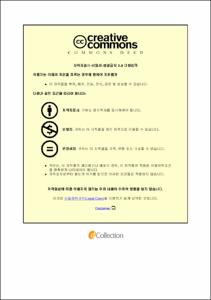딥러닝을 이용한 흉부 단순 촬영에서 생물학적 연령 예측과 골다공증 선별 모델 개발
- Abstract
- Recently, deep learning algorithms, especially convolutional neural network (CNN) architectures, have been widely recognized as an outperforming and reliable approach to identify clinically useful features directly from the medical images. The majority of studies that use deep learning for medical image analysis aim to replicate a task already performed by humans. In addition to emulating humans, deep learning also offers the potential of identifying significant imaging features that are beyond a radiologist’s visual search pattern, and potentially improving the diagnostic or screening value of medical images.
Chest radiography is the most widely available medical imaging modality, providing a wealth of information regarding the cardiovascular and musculoskeletal systems. Research using chest radiography-derived biological age estimates were showed successful predictions of longevity, long-term mortality, and cardiovascular risk. Prediction of sex on chest radiographs using deep learning model has been shown high accurate performance and it could be a potential contributor in imbalanced sex representation datasets. Opportunistic screening using deep learning also has been applied various medical imaging for early detecting osteoporosis, compression fractures, cardiovascular risk, and so on.
For the first phase of this thesis, deep learning models that can identify demographic information from a single chest radiograph were developed. Chest radiographs are the first-line tool for screening patients with nonspecific symptoms of the thorax in routine clinical practice and demographic information is the most basic and important factor in predicting the prognosis of a disease. The benefits of medical imaging for predicting age and sex may stem from the fact that age and sex are not simply one single concept. In fact, the overall consequences of temporal, biological, and/or pathological alterations may be reflected in imaging findings. We aimed to assess the accuracy of a deep learning model for age and sex estimation based on chest radiographs reported within normal limits of adult from a real-world clinical dataset. The performance of deep learning models for predicting age and sex across architectures were evaluated and stress tests on limited number of data were conducted.
For the second phase of this thesis, deep learning models for screening osteoporosis with chest radiographs were developed. Osteoporosis is often not detected until fracture presentation and is hence considered a “silent epidemic” with a need for early diagnosis. Some studies have conducted osteoporosis screening in bones other than the vertebrae and femur on hand radiographs and panoramic radiographs. When using chest radiographs, readers often mention the presence of osteoporosis, but it is known that even if made by an experienced radiologist, the diagnosis of osteoporosis using chest radiographs is still unreliable. However, in this thesis, the deep learning models for opportunistic screening osteoporosis using chest radiographs were developed and verified in the external dataset.
In this thesis, the stress tests in the osteoporosis dataset were also conducted on limited number of datasets and reconstructed dataset by sampling the same number of men and women. Osteoporosis is a prevalent age-related condition that is more common in women than in men and it also found in our osteoporosis dataset. In order to become an unbiased and generally applicable model, it must be able to utilize or exclude gender and age information well. To this end, various experiments using gender and age information were conducted. In addition, to be applied and used in clinical practice, it is necessary to have the explanatory power of the model's decision as well as the performance of the model. The gradient-weighted class activation mapping technique (Grad-CAM) was used to identify the discriminative regions on chest radiographs contributed to the model's predictions.
In conclusion, deep learning model can extract more information on chest radiographs than human perceptions. Although this thesis has only shown the potential, chest radiographs-derived biologic age may help to evaluate prognosis of individual or diagnosis of disease. In addition, osteoporosis screening deep learning model using chest radiographs was developed. Experiments were conducted to explain this result and to make the model robust in various situations. Examples of usage scenarios are presented in this model so that it can be applied to clinical practice. This model is expected to provide practical utility that chest radiographs can be used for the opportunistic screening of osteoporosis, without additional exposure and substantial costs.
- Issued Date
- 2022
- Awarded Date
- 2022-08
- Type
- dissertation
- Alternative Author(s)
- Miso Jang
- Affiliation
- 울산대학교
- Department
- 일반대학원 의과학과 의공학전공
- Advisor
- 김남국
- Degree
- Doctor
- Publisher
- 울산대학교 일반대학원 의과학과 의공학전공
- Language
- eng
- Rights
- 울산대학교 논문은 저작권에 의해 보호 받습니다.
- Appears in Collections:
- Mechanical Engineering > 2. Theses (Ph.D)
- 파일 목록
-
-
Download
 200000630616.pdf
기타 데이터 / 2.77 MB / Adobe PDF
200000630616.pdf
기타 데이터 / 2.77 MB / Adobe PDF
-
Items in Repository are protected by copyright, with all rights reserved, unless otherwise indicated.